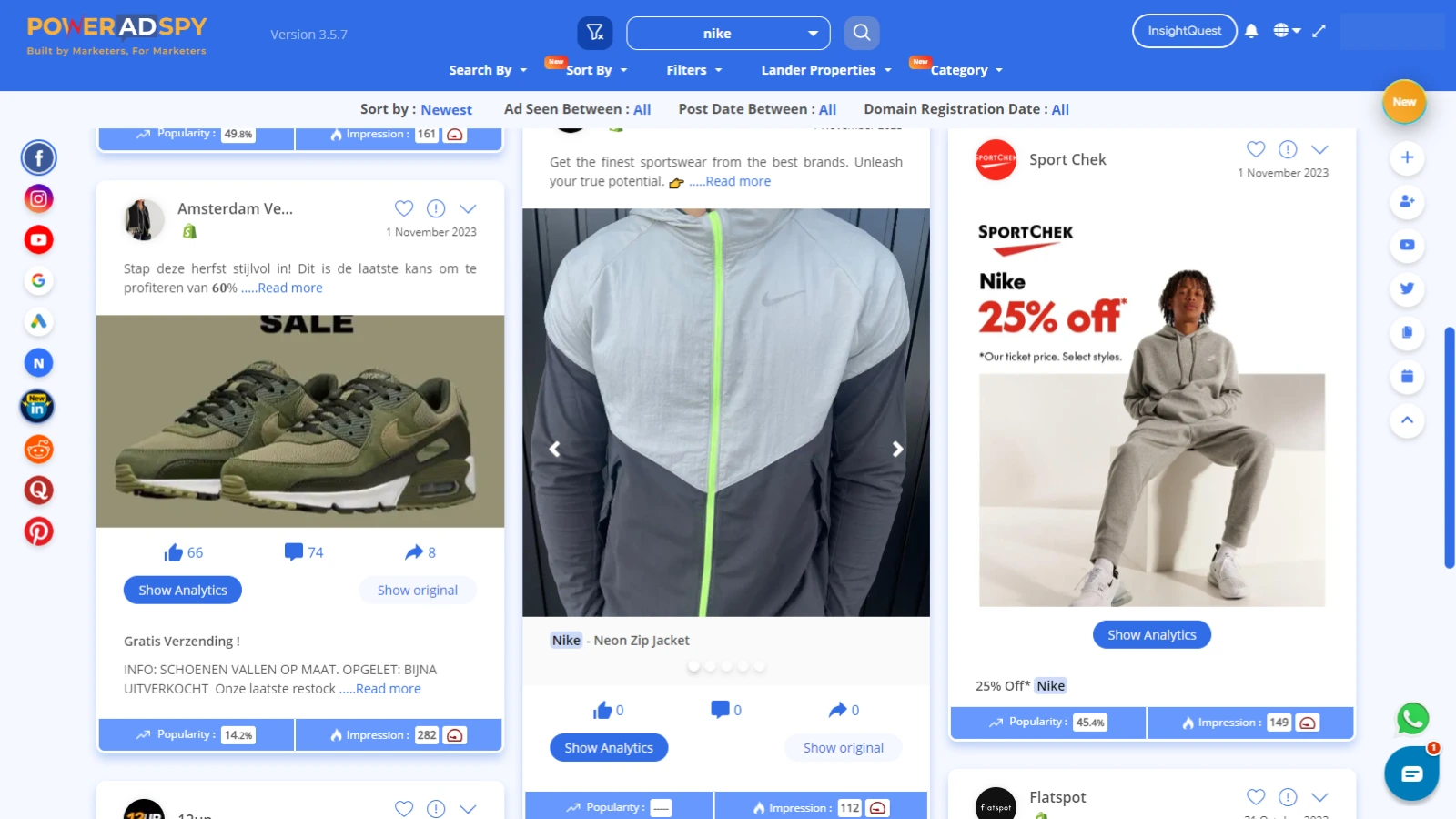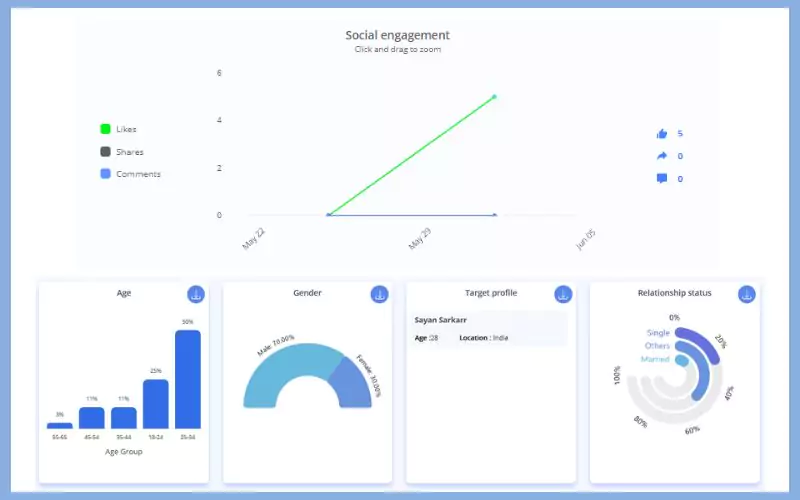Brand Advertisement: What Is It and How Does It Work?
Irrespective of the exceptional quality of your products, it’s essential to recognize that without a proper introduction to your audience, their greatness may go unnoticed. Establishing enduring connections with your customers is key; you want them to associate your products with your brand. This is where the significance of brand marketing comes into play.
It’s crucial to understand that there exist numerous avenues to foster brand awareness and generate leads. Trying a variety of approaches simultaneously may be beneficial, such as leasing billboards or crafting television advertisements. Equally important is recognizing the influence of social media. Online branding is just as vital as its offline counterpart.
In this comprehensive guide, we’ll delve into all these questions, shedding light on what brand advertising entails and offering you valuable insights into how to kickstart your branding campaign.
Listen To The Podcast Now!
What is Brand Advertisement?
Brand ads, often simply referred to as branding, is the practice of promoting and popularizing a brand, rather than specific products or services.
It focuses on creating a strong brand identity and emotional connection with the target audience. The goal of this advertising is to enhance recognition for the brand, build trust, and foster customer loyalty.
Key Characteristics of Brand Ads
To better understand brand advertising, let’s explore some of its key characteristics:
- Long-Term Focus: Unlike direct response advertising, which aims for immediate sales, brand ads like clothing advertisement etc take a long-term approach. It seeks to establish a brand’s presence and identity over time, with the expectation that this will lead to sustained customer engagement and loyalty.
- Emotional Appeal: Successful advertising of a brand often leverages emotions to create a connection with the audience. These emotions can be anything from joy and humor to nostalgia and empathy. The goal is to make the brand relatable and memorable.
- Consistency: Consistency in messaging, design, and tone is vital in brand advertising. This helps solidify the brand’s image in the minds of consumers. When customers see a consistent brand identity, they’re more likely to recognize and trust it.
- Brand Storytelling: Narratives and storytelling are essential elements of brand advertisement. Companies can use stories to convey their brand values, history, and mission. This personalizes the brand and makes it more appealing.
- Audience-Centric: This advertising is all about understanding and resonating with the target audience. It’s not just about selling products; it’s about building a meaningful relationship with consumers.
Who Should Use Brand Advertisement
Brand ad is suitable for a wide range of businesses, from startups to established corporations. Let’s take a closer look at who can benefit the most from this advertising.
Startups and Small Businesses
For startups and small businesses, brand advertising is an opportunity to make a mark in the market.
It’s a chance to establish a unique identity and compete effectively with larger, more established competitors.
By creating a compelling brand story and image, smaller businesses can captivate their audience and stand out in a crowded marketplace.
Established Companies
Even well-established companies can benefit from brand ad. As markets evolve and competition intensifies, it’s crucial for these companies to remain relevant and adapt to changing consumer preferences.
A strong brand can help maintain customer loyalty and attract new customers.
Niche Businesses
Niche businesses with a highly specialized or unique offering, can leverage brand advertising to become authorities in their respective domains.
It allows them to build a loyal following of customers who appreciate the uniqueness of their products or services.
Non-Profit Organizations
Non-profit organizations rely heavily on trust and credibility to garner support and funding. Brand advertisement helps them create a meaningful connection with their donors and supporters, enabling them to stand out and make a difference in their cause.
E-commerce Businesses
In the world of e-commerce, where countless products are available at consumers’ fingertips, brand ads are an effective way to differentiate from the competition and competitor’s ads. Building a strong brand presence can lead to higher conversion rates and repeat business.
How Brand Advertisement Works
Brand advertising involves a series of strategies and techniques aimed at building and promoting a brand’s identity. Let’s explore how this process works:
Research and Audience Analysis
To start, a brand must conduct thorough research and analysis. This includes understanding the target audience, their needs, and their preferences. This research informs the development of a brand strategy.
Brand Strategy
A brand strategy outlines the brand’s goals, values, positioning, and messaging. It’s a blueprint that guides all brand advertisement efforts. A well-defined strategy ensures that the brand’s identity is clear and consistent across all channels.
Visual Identity
The visual elements of a brand, such as the logo, color scheme, and typography, play a crucial role in brand advertising. It is crucial to carefully design these elements to convey the brand’s personality and values.
Content Creation
Creating compelling and engaging content is a cornerstone of brand ads. This content can take various forms, including blog posts, social media updates, videos, etc. It should be aligned with the brand’s messaging and resonate with the target audience. Going through a branded content guide can help in creating good content for your brand.
Multi-Channel Promotion
Brand advertisement utilizes multiple channels to reach and engage audience. This may include social media, email marketing, content marketing, influencer collaborations, and traditional advertising methods.
Monitoring and Adaptation
Brands should regularly monitor the performance of their advertising efforts. They use analytics and feedback to adjust their strategies as needed, ensuring that they remain relevant and effective. They can analyze the strategies between brand and performance marketing to select the ad strategy that will work the best for them.
Building Trust and Loyalty
Over time, successful brand advertising builds trust and loyalty with customers. This results in repeat business and positive word-of-mouth recommendations, further strengthening the brand’s identity.
The Power of Ad Intelligence Tools in Brand Ads
Ad intelligence tool can play a pivotal role in brand advertisement, providing advertisers with a competitive edge in understanding and reaching their target audience effectively. Let’s explore the significant role of these tools in advertising brand:
Competitor Analysis
Having an Ad intelligence tool such as PowerAdSpy, is valuable for conducting in-depth competitor analysis. They offer a comprehensive view of the competitive landscape, allowing brand advertisers to dissect their competitors’ strategies.
By understanding what works for others and what doesn’t for other brands, advertisers can formulate more informed strategies for their brand advertising.
Target Audience Insights
These tools provide access to essential data on audience demographics, preferences, and behaviors.
This information is crucial for crafting brand strategies that resonate with the intended audience.
With the insights gathered from ad intelligence tools, advertisers can create highly targeted and effective campaigns.
Ad Creative Inspiration
Ad intelligence tools often include libraries of ad creatives from various platforms. For instance, PowerAdSpy offers a vast collection of ad examples.
Advertisers can draw inspiration from these high-performing ad creatives and adapt them to align with their brand’s messaging and values.
This resource simplifies the content creation process and ensures the content aligns with what’s proven to be effective.
Platform Diversification
Ad intelligence tools cover a wide range of advertising platforms, including social media, search engines, and display networks.
By having insights into which platforms are working best in their niche, advertisers can make informed decisions about where to allocate their resources for maximum impact. This helps in effectively diversifying their brand advertising efforts.
Real-Time Tracking and Adaptation
The competitive landscape and consumer behavior are constantly evolving. These tools provide real-time tracking of competitors’ ad campaigns.
This allows brand advertisers to stay agile and adapt their strategies needed to remain competitive and relevant in their market.
The real-time data enables advertisers to make timely adjustments and optimize their campaigns.
Incorporating the best ads spy tool Poweradspy into your brand ads strategy can provide a significant advantage.
With the data and insights brand advertisers can make informed decisions and create more effective, targeted campaigns.
In a highly competitive and dynamic digital advertising landscape, these tools are essential for building and maintaining an enduring brand identity.
Also Read
What is Competitor Ads Analysis and Why is it Important | 7 Best Practices
7 Brilliant Clothing Ads Ideas For Your Brands
Nike Marketing Strategy: Ads Tactics To Build A Timeless Brand
What Makes Emotional Appeal Advertising So Powerful Today?
Brand Advertisement Examples
To illustrate the concepts of brand advertising and inspire your own campaigns, let’s explore some iconic examples:
Apple
Apple’s brand advertisement is a masterclass in simplicity and elegance.
Their minimalist approach, both in product design and advertising, has made them a symbol of innovation and sophistication.
Apple focuses on emotional storytelling, emphasizing how their products can change lives and inspire creativity.
To draw inspiration from such brand advertising, advertisers can utilize YouTube ad spy tools to identify similar campaigns and gain insights into the kind of Apple-style ads that are typically published and promoted on the platform.
Nike
Nike’s “Just Do It” campaign is a prime example of powerful advertising for brand. It’s not just about selling sneakers; it’s about inspiring people to achieve their goals and overcome obstacles.
Nike’s advertisements associates itself with top athletes and influencers, reinforcing the idea that anyone can achieve greatness while wearing Nike.
Coca-Cola
Coca-Cola’s is deeply rooted in nostalgia and emotional connections.
Their timeless Christmas ads, featuring the iconic Santa Claus, create warm feelings of togetherness and joy.
Coca-Cola has successfully built a brand that is synonymous with happiness and sharing.
Dove
Dove’s “Real Beauty” campaign is an excellent example of a brand ad that challenges societal norms.
By celebrating real beauty in all its forms, Dove empowers women and promotes self-confidence.
The brand goes beyond just selling beauty products; it stands for a more inclusive and positive world.
Red Bull
Red Bull is more than just an energy drink; it’s a brand that embodies the spirit of adventure and extreme sports.
Their brand advertising features exciting events and stunts, associating the drink with a lifestyle of thrill-seekers and adrenaline junkies.
Conclusion
Brand advertising is a vital component of any marketing strategy, offering businesses and organizations the means to create a solid and lasting impression on their target audience. Marketing vs advertising plays a crucial role in understanding how to effectively reach and engage consumers.
By focusing on building a unique brand identity, emotionally connecting with customers, and maintaining consistency, brands can establish trust, loyalty, and long-term success.
Whether you’re a startup, a well-established company, a niche business, or a non-profit organization, brand advertisement can be a powerful tool in your marketing arsenal.














